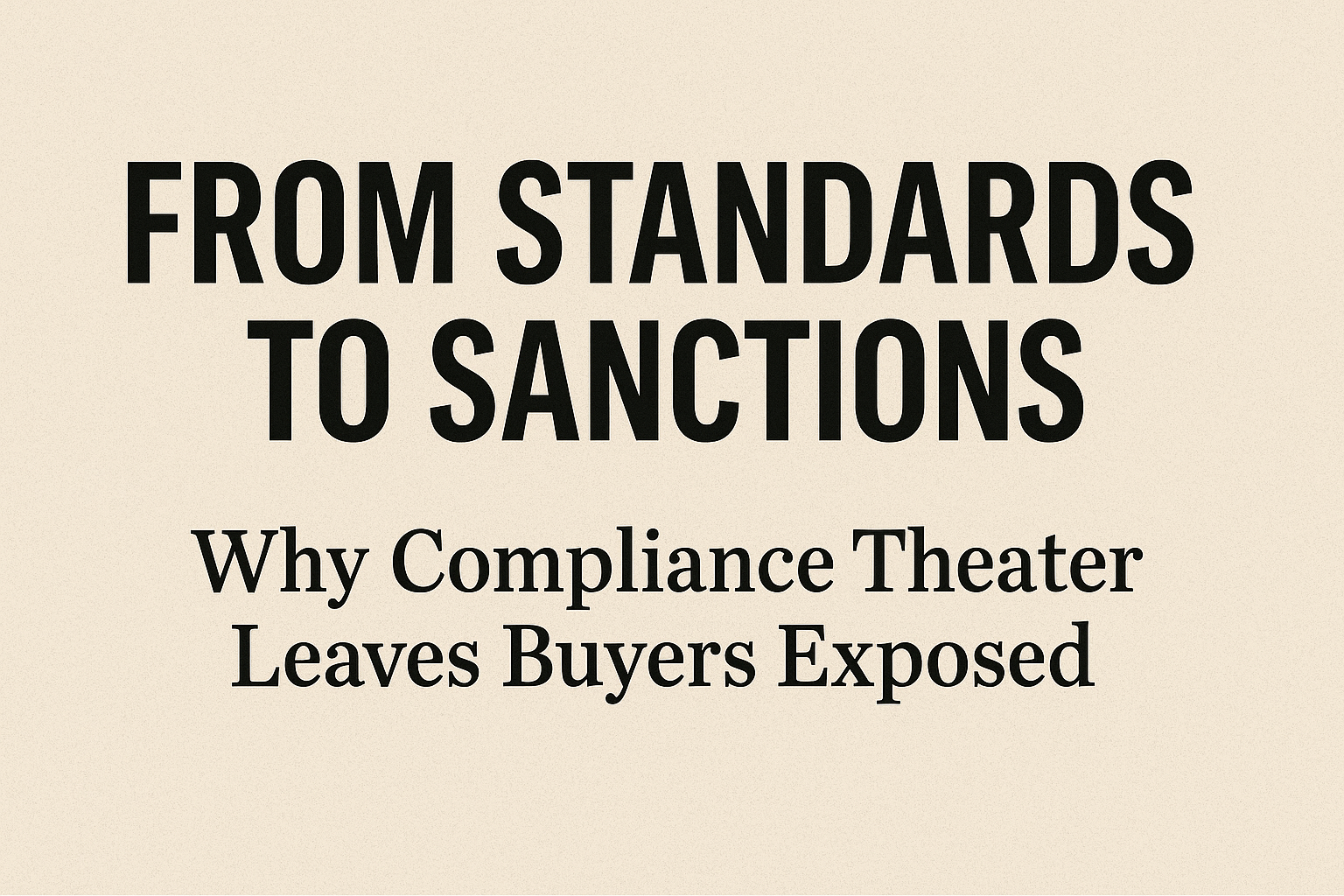From Standards to Sanctions: Why Compliance Theater Leaves Buyers Exposed

Generative AI vendors are quick to claim GDPR compliance. A common refrain: “We strip personally identifiable information (PII), therefore the dataset is anonymous.” On the surface, this sounds like protection. Under closer inspection, it is neither anonymity nor compliance. For enterprise buyers, it is compliance theater — reassuring paperwork that will not survive regulatory scrutiny.
Stripping PII ≠ Anonymization
The European Data Protection Board (EDPB) is explicit:
- Pseudonymization — removing or masking identifiers — does not exempt data from GDPR. It remains personal data if re-identification is reasonably likely [GDPR Art. 4(5); Recital 26].
- Anonymization requires irreversibility. The test is whether anyone, using reasonably available means, could single out individuals [EDPB, Opinion 05/2014].
Prompt datasets rarely meet this bar. Linguistic style, rare terms, and contextual details create high risk of singling out, which is sufficient for GDPR to treat the data as personal.
Regulatory Precedents
European regulators have consistently rejected the “stripped PII = anonymous” position:
- ICO (UK): sanctioned organizations that treated pseudonymized health records as anonymous, stressing that the risk of re-identification, not intent, defines compliance.
- CNIL (France): reaffirmed that anonymization must be “irreversible and robust to re-identification attempts” [CNIL, 2020].
- Article 29 Working Party Opinion 05/2014: established that anonymization must withstand evolving technology, not just today’s limits.
Compliance Theater vs Compliance Reality
Vendors may attempt to reassure buyers with four common tactics:
- Publishing a DPIA or LIA. These documents often conclude “low residual risk,” but regulators routinely reject “legitimate interest” for sensitive conversational data.
- Asserting aggregation. Coarse statistics may sound safe, but if individuals can still be singled out, aggregation fails the test.
- Recasting as processors. This only works if the vendor stops reselling datasets and operates solely under enterprise DPAs.
- Claiming consent flows. Unless backed by clear opt-in UX and audit trails, such claims collapse under scrutiny.
Each tactic can lull procurement teams into comfort, yet none resolves the underlying exposure. This creates an asymmetry: buyers believe they are shielded, but regulators will see pseudonymized data masquerading as anonymous.
Enterprise Buyer’s Dilemma
- Legal: Under GDPR Art. 82, controllers and processors are jointly liable. Buyers cannot contract out of exposure.
- Financial: Art. 83 fines reach 4% of global turnover. Regulators pursue the enterprise with the balance sheet, not the vendor.
- Reputational: Headlines about harvesting re-identifiable user prompts under the false banner of anonymity would cause enduring brand damage.
Governance Failure by Design
When vendors mislabel pseudonymized data as anonymous, they compromise more than compliance. They prevent boards from discharging their oversight duties. A board relying on false assurances is not governing — it is blindfolded.
What Boards Must Demand
- Independent attestation of anonymization methods, aligned with EDPB standards.
- Explicit contractual clarity on whether data is anonymized or pseudonymized.
- Governance-grade standards for both visibility measurement and data provenance.
Conclusion
Stripped-PII datasets marketed as anonymous are a governance trap: persuasive enough to satisfy procurement, but fragile under enforcement. Enterprises that rely on vendor assurances without independent attestation are buying liability disguised as compliance. In the AI visibility market, the only safe path forward is standards, not dashboards — and certainly not compliance theater.
References
- GDPR, Regulation (EU) 2016/679, Art. 4(5), Art. 82, Art. 83, Recital 26.
- European Data Protection Board, Opinion 05/2014 on Anonymisation Techniques (endorsed post-GDPR).
- EDPB, Guidelines 05/2020 on Consent under Regulation 2016/679.
- CNIL, Anonymisation and pseudonymisation in practice, 2020.
- UK ICO, Anonymisation: Managing Data Protection Risk Code of Practice, 2012; subsequent enforcement actions (2012–2016).
